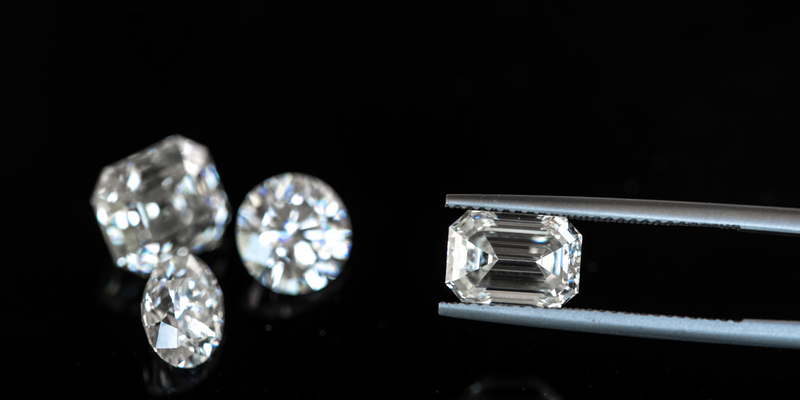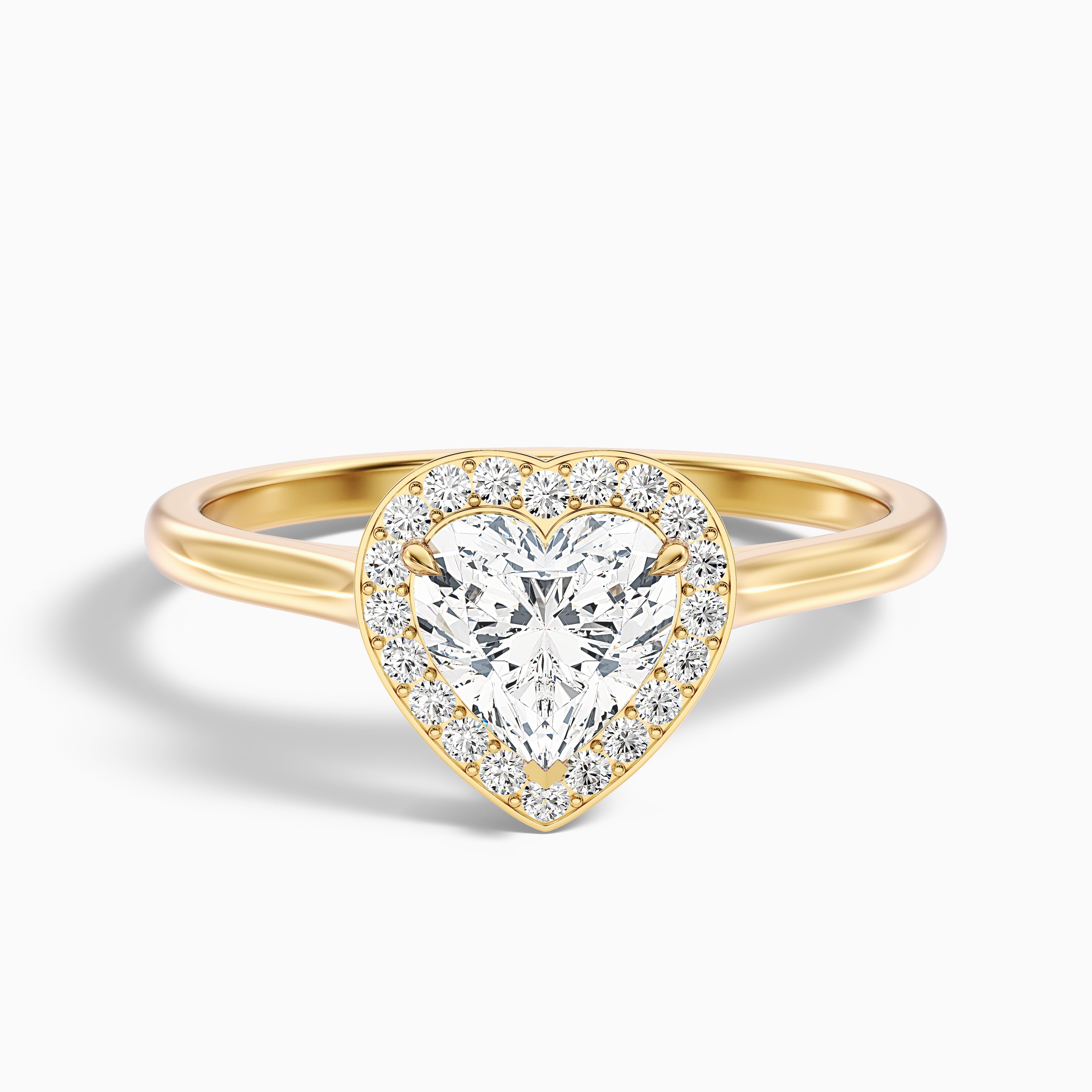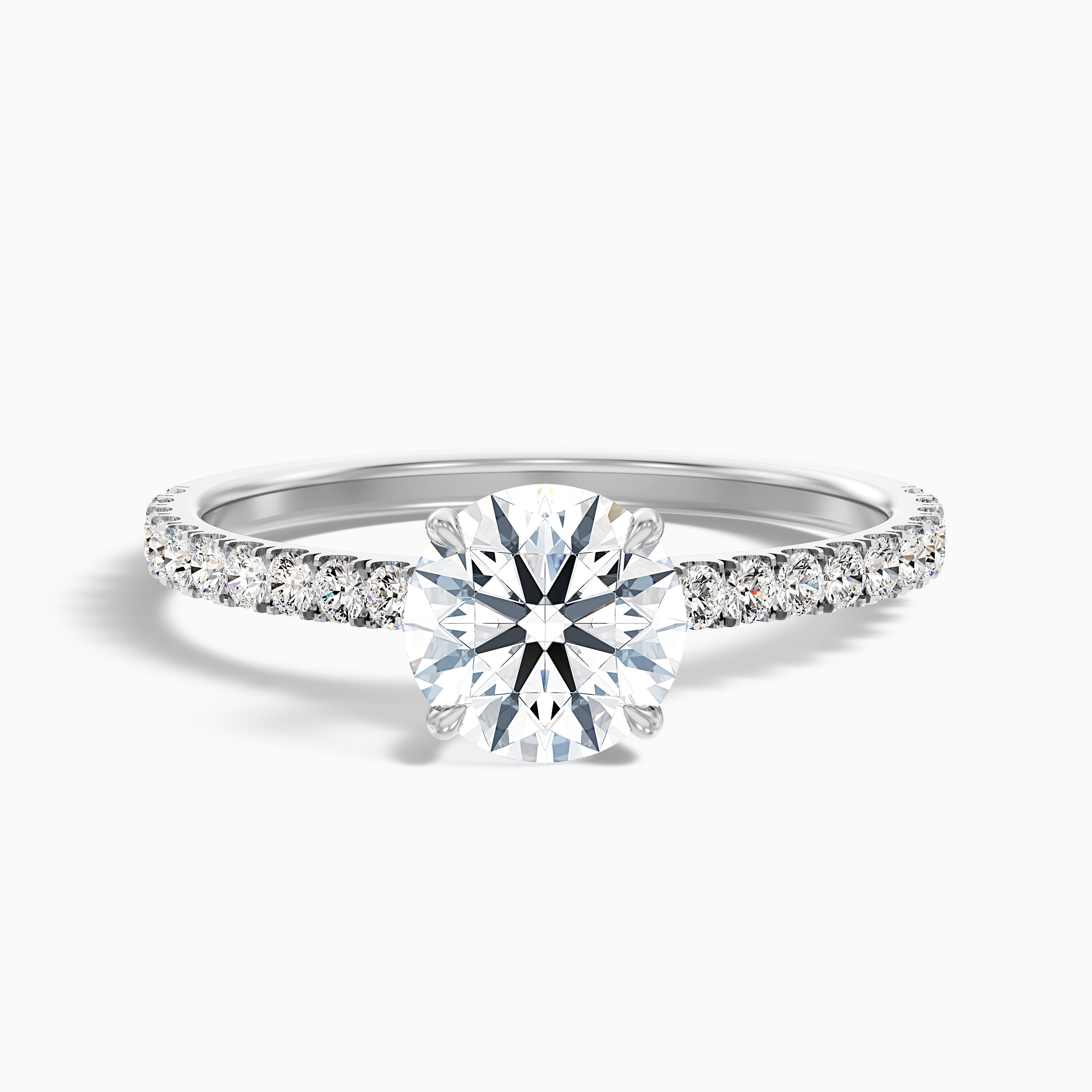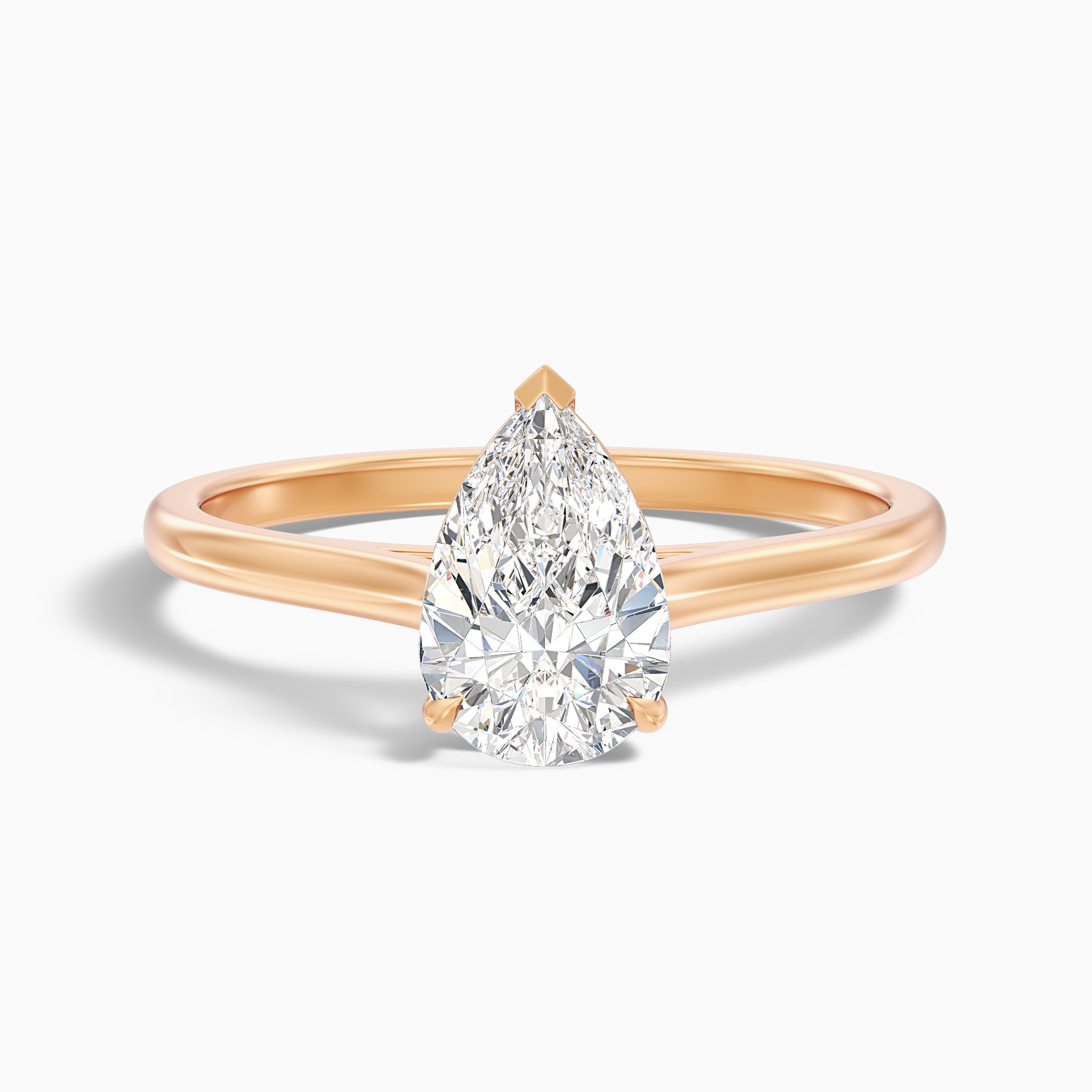Breaking Down the Cost of Moissanite

Moissanite is a gemstone that looks much like a diamond but costs less. If you're thinking about buying moissanite for an engagement ring, earrings, or any other jewelry, you probably want to know how much it costs and why.
Prices can vary greatly depending on size, quality, brand, and where you buy it. Some pieces are super affordable, while others can still be pricey (though nothing like diamonds). This guide will break down every little thing that affects Moissanite’s cost, compare it to diamonds, and show you how to get the best deal.
What is Moissanite?

Moissanite is a gemstone that has been gaining popularity as an alternative to diamonds. It wasn't always easy to find, though. The story of Moissanite begins over a century ago when French chemist Henri Moissan discovered tiny crystals of silicon carbide in a meteor crater in Arizona. At first, he thought they were diamonds because of their brilliance, but later tests revealed something even rarer: natural Moissanite.
Natural Moissanite is incredibly scarce, which is why nearly all Moissanite on the market today is lab grown. Scientists figured out how to replicate its unique properties in controlled environments, making it widely available. Lab grown Moissanite shares the same chemical makeup as its natural counterpart but is far more practical for jewelry use.
One reason Moissanite is compared to diamonds is its physical traits. For starters, it ranks 9.25 on the Mohs scale of hardness, making it one of the hardest materials known to man (diamonds rank 10). This means Moissanite can withstand daily wear and tear without scratching easily. Its refractive index, which is the measure of how much light bends within the stone, is higher than a diamond's, giving it exceptional fire and brilliance.
Fire refers to the colorful flashes you see when the stone catches light, while brilliance describes how well it reflects white light. Together, these qualities make Moissanite a standout option for anyone looking for maximum sparkle.
But here’s where things get interesting: Despite its similarities to diamonds, Moissanite isn’t trying to be one. Instead, it carves out its own identity with a distinct shimmer and affordability that appeals to many buyers.
Related Read: The Ultimate Guide to Moissanite Rings: Everything You Need to Know
Average Cost of Moissanite
When it comes to price, Moissanite stands out from other gemstones. For high-quality Moissanite stones with VVS clarity and D-E-F color (the highest grades for clarity and color), you can expect to pay anywhere between $300 and $800 per carat. Compare that to natural diamonds, which typically cost thousands of dollars per carat, or even lab-grown diamonds, which range from $800 to $1,500 per carat.
The difference in cost doesn’t mean Moissanite is inferior, but it simply reflects supply and demand dynamics. Diamonds have long held cultural significance and come with hefty marketing campaigns behind them. Moissanite, on the other hand, is newer to the scene and benefits from being created in labs rather than mined from the earth.
From a value for money standpoint, Moissanite shines brightly. You get a stone with incredible durability, stunning sparkle, and ethical sourcing at a fraction of the price of a diamond. For budget-conscious buyers who want luxury without overspending, Moissanite is hard to beat.
Price Breakdown by Carat Size, Color, and Clarity
To give you a clearer picture, here’s a detailed table showing the average cost of Moissanite stones ranging from 1 to 5 carats, along with color and clarity specifications:
| Carat Size | Color Grade | Clarity Grade | Average Price Range |
|---|---|---|---|
| 1 Carat | Near-Colorless (G-H) | VVS1-VVS2 | $300−$400 |
| 1 Carat | Colorless (D-E) | IF-FL | $500−$600 |
| 2 Carats | Near-Colorless (G-H) | VVS1-VVS2 | $600−$800 |
| 2 Carats | Colorless (D-E) | IF-FL | $900−$1,200 |
| 3 Carats | Near-Colorless (G-H) | VVS1-VVS2 | $1,000−$1,500 |
| 3 Carats | Colorless (D-E) | IF-FL | $1,600−$2,000 |
| 4 Carats | Near-Colorless (G-H) | VVS1-VVS2 | $1,800−$2,400 |
| 4 Carats | Colorless (D-E) | IF-FL | $2,500−$3,000 |
| 5 Carats | Near-Colorless (G-H) | VVS1-VVS2 | $2,500−$3,500 |
| 5 Carats | Colorless (D-E) | IF-FL | $3,500−$4,500 |
Factors That Influence Moissanite Pricing
Not all Moissanite stones are priced equally. Several factors play a role in determining how much you’ll end up paying:
Carat Size
Just like diamonds, Moissanite is sold by weight, measured in carats. Larger stones naturally command higher prices. However, because Moissanite is less dense than diamond, a one carat Moissanite will appear slightly bigger than a one carat natural diamond. Keep this in mind if size matters to you!
Cut and Shape
The cut and shape of the stone also impact its cost. Round cuts tend to be pricier due to their popularity and the precision required during cutting. Fancy shapes like oval, cushion, or marquise are often less expensive but still offer plenty of character.
Color and Clarity Grading
Moissanite comes in various shades, ranging from near-colorless to completely colorless. Near-colorless stones are generally cheaper but still look stunning under normal lighting conditions. Clarity isn’t as big of a concern with Moissanite since inclusions (tiny flaws) are rare thanks to lab-controlled growing processes.
Brand
Brands matter, too. Companies like Charles & Colvard and Harro Gem are well-known for producing premium-quality Moissanite. Their stones often carry a higher price tag due to brand reputation and proprietary technologies. Generic brands may offer lower prices but could lack consistency in quality.
Stone Origin
Finally, there’s the origin of the stone itself. Premium Moissanite from reputable producers tends to be more expensive than generic alternatives. If you’re buying from lesser-known sources, proceed with caution to avoid subpar products.
Moissanite Vs. Diamond: A Cost Comparison
Let's break down the numbers. A one carat diamond can cost anywhere from 4000 to 10,000, depending on its quality. A one carat Moissanite is typically around 400 to 600. Even lab grown diamonds, which are marketed as affordable alternatives, start at roughly double the price of Moissanite.
Visually, both stones are striking, but they differ in subtle ways. Diamonds have a classic, timeless sparkle, while Moissanite sparkles with fiery flashes of rainbow hues. Some people prefer the understated beauty of diamonds, while others love the bold flashiness of Moissanite.
Financially speaking, Moissanite makes sense for many buyers. Not only does it save you money upfront, but it also eliminates concerns about resale value. Diamonds lose a significant portion of their worth once purchased, whereas Moissanite retains its utility as a piece of jewelry regardless of market trends.
Here’s a detailed comparison table that breaks down the costs and features of Moissanite and diamonds across carat sizes and qualities:
Setting Costs and How They Add to the Price
While the stone itself is the star of the show, don’t forget about the setting. The type of setting you choose can significantly impact the overall cost of your ring.
Popular styles include solitaire settings, which feature a single stone, halo settings that surround the center stone with smaller accent stones, and pavé settings where tiny stones line the band. Each design adds its own flair and price point. Vintage inspired settings with intricate details might cost more due to the craftsmanship involved.
Metal choice is another factor. Gold options like yellow, white, or rose gold vary in price based on purity levels (10k, 14k, 18k). Platinum is durable but pricey, while sterling silver offers affordability with some trade-offs in longevity.
Custom designs allow you to create something truly unique but often come with a premium price tag. Ready-made rings, on the other hand, provide convenience and predictable costs.
Pros and Cons of Choosing Moissanite for Your Budget
Like any purchase, choosing Moissanite has its upsides and downsides.
Pros:
- Affordability: You can afford a larger, higher-quality stone for less money.
- Sparkle: Few stones rival the brilliance of Moissanite.
- Ethical Sourcing: Since its lab was created, Moissanite has avoided the environmental and humanitarian issues associated with diamond mining.
Cons:
- Resale Value: Unlike diamonds, Moissanite doesn’t hold much resale value.
- Different Sparkle Pattern: Some purists argue that Moissanite’s fiery flashes differ from the traditional diamond sparkle.
Who is Moissanite best suited for? Anyone seeking a budget-friendly yet breathtaking gemstone. It’s ideal for engagement rings, anniversary gifts, or statement pieces without compromising ethics or aesthetics.
Related Article: How to Check If Your Moissanite Ring is Real?
Tips to Save Money When Buying Moissanite
Want to stretch your budget further? Here are some practical tips:
1. Shop During Sales
Timing your purchase can make a big difference in how much you spend. Many jewelers run promotions during key times of the year, such as holidays, Black Friday, Cyber Monday, Valentine’s Day, and even summer clearance events. These sales often include significant discounts on both loose stones and finished jewelry pieces.
How to Make the Most of Sales:
- Sign Up for Newsletters: Jewelers frequently send exclusive deals to their email subscribers. Signing up ensures you’re among the first to know about upcoming sales.
- Follow Brands on Social Media: Companies often announce flash sales or limited-time offers on platforms like Instagram or Facebook.
- Set Price Alerts: If you’re shopping online, tools like price tracking apps can notify you when the item you want drops in price.
- Avoid Last-Minute Rushes: Planning ahead allows you to take advantage of sales rather than feeling pressured to buy at full price because of a tight timeline.
By waiting for the right moment, you could shave hundreds off the cost of your Moissanite purchase.
Related Article: Moissanite Grading: Understanding Color, Clarity, Cut & Carat
2. Choose Near Colorless Stones
One of the most effective ways to save money is by opting for near-colorless Moissanite instead of colorless varieties. To understand why this works, it helps to know how Moissanite is graded for color.
Moissanite comes in different color grades, ranging from completely colorless (graded D-E-F) to near colorless (graded G-H-I). The difference between these grades is subtle and often only noticeable under specific lighting conditions or when compared side-by-side. In everyday settings, near colorless stones look virtually identical to their pricier counterparts.
Why Near Colorless is a Smart Choice:
- Cost Savings: Near-colorless stones are significantly cheaper than colorless ones, sometimes by 20-30%.
- Natural Appearance: A slight warmth in tone can give the stone a more natural, diamond-like appearance.
- Versatility: Near-colorless stones pair beautifully with all types of metals and settings.
3. Consider Unique Shapes
The shape of your Moissanite plays a major role in its price. While round brilliant cuts are the most popular and, therefore, the most expensive. There are plenty of other shapes that offer incredible value without compromising on style.
Popular Fancy Shapes to Explore:
- Oval: Known for its elongated silhouette, oval Moissanite creates the illusion of a larger stone while being more affordable than round cuts.
- Pear: This teardrop-shaped stone combines the sparkle of a round cut with a distinctive, vintage-inspired look.
- Marquise: With its pointed ends, marquise Moissanite maximizes carat weight, making it appear bigger than other shapes of the same size.
- Cushion: A softer, pillow-like shape that blends classic charm with modern flair.
- Emerald: Though not as fiery as other cuts, emerald Moissanite exudes elegance and sophistication.
Fancy shapes are not only unique but also tend to be priced lower due to differences in cutting techniques and demand. Choosing one of these options lets you stand out while staying within budget.
4. Buy Direct to Consumer
Traditional retail markups add a big premium to jewelry, but by cutting out the middleman and buying directly from manufacturers or online retailers like CaratBee, you can save significantly. At CaratBee, we offer transparent pricing with minimal overhead, passing the savings to you. Our platform features a wide selection of stones, settings, and customization options, often beyond what brick-and-mortar stores provide.
Tips for Buying Online:
- Check Return Policies: Ensure the retailer offers a generous return window in case the product doesn’t meet your expectations.
- Look for Certifications: Reputable brands provide certificates of authenticity and detailed grading reports for their stones.
- Read Reviews: Customer feedback can give you insights into the quality of the product and the company’s customer service.
Direct-to-consumer shopping eliminates unnecessary expenses, ensuring you get the best value for your money.
5. Customize Thoughtfully
Custom designed rings don’t have to cost a fortune. Start simple with a basic setting you can upgrade later, mix metals like rose and white gold for added style, and skip costly details like intricate engravings. Consider timeless options like pearls or semi-precious stones for affordable elegance. With thoughtful choices, you can create a unique ring that fits your budget.
Conclusion
Moissanite offers a winning combination of beauty, durability, and affordability. Whether you’re drawn to its eco-friendly origins, its wallet-friendly price tag, or its eye-catching sparkle, there’s no denying that Moissanite is a smart choice for modern jewelry lovers. By understanding what influences its cost and knowing how to shop wisely, you can make an informed decision that fits both your style and your budget. So go ahead and embrace the brilliance of Moissanite and let it light up your life!






